When it comes to assessing the quality of plumbing in a home, a common concern arises: can an inspector ensure that the plumbing is done correctly if they can’t physically see it? Plumbing systems, often concealed within walls and beneath floors, can pose a challenge for home inspectors. This article delves into the methods employed by inspectors to evaluate hidden plumbing and offers insights into the importance of their expertise in ensuring a home’s overall integrity.
How Your Inspector Looks at Plumbing
-
Visual Inspection and Accessible Areas:
While some plumbing components are concealed, inspectors can still examine visible elements in accessible areas. This includes inspecting exposed pipes, fixtures, and water heaters. A visual inspection of these elements provides valuable information about the overall condition and potential issues.
-
Utilizing Specialized Tools:
Inspectors employ a variety of specialized tools to go beyond what is visible to the naked eye. Moisture meters, thermal imaging cameras, and sewer cameras are among the tools that can help inspectors identify hidden issues such as leaks, water damage, or inadequate insulation.
- Moisture Meters: These devices detect excess moisture in materials, helping inspectors identify potential water damage or plumbing leaks.
- Thermal Imaging Cameras: Infrared technology allows inspectors to detect temperature variations, revealing potential hidden issues like water leaks or inadequate insulation.
- Sewer Cameras: Used for inspecting sewer lines, these cameras can reveal blockages, cracks, or other issues within the plumbing system.
-
Water Pressure and Flow Testing:
Inspectors often perform water pressure and flow tests to assess the functionality of the plumbing system. Inconsistent water pressure or slow flow rates can indicate potential issues within the pipes, even if they are hidden from view.
-
History and Documentation:
A thorough inspection includes reviewing the history of the property and any available documentation related to plumbing repairs or installations. This information can provide insights into the maintenance of the plumbing system and alert inspectors to potential red flags.
-
Comprehensive Inspection of Visible Components:
Inspectors focus on thoroughly examining visible plumbing components, such as pipes, fittings, and fixtures. Signs of corrosion, rust, or visible leaks can indicate problems that may extend to concealed areas.
-
Assessing Water Quality:
Water quality testing is another aspect of plumbing inspection. While not directly related to hidden pipes, water quality assessments can reveal issues such as contaminants or impurities that may affect the plumbing system.
-
Experience and Expertise:
An experienced home inspector brings a wealth of knowledge and expertise to the evaluation process. Their understanding of common plumbing issues, building codes, and construction standards enables them to make informed assessments even when components are not directly visible.
-
Recommendations for Further Evaluation:
If inspectors encounter limitations in accessing certain plumbing components, they may recommend further evaluation by specialized professionals. This could involve hiring a licensed plumber for a more in-depth inspection or conducting specific tests to address concerns.
While the challenge of assessing hidden plumbing components exists, skilled home inspectors utilize a combination of visual inspections, specialized tools, and comprehensive testing to ensure a thorough evaluation. Their ability to identify potential issues, even when concealed, is a testament to their expertise and commitment to ensuring the safety and integrity of a home. Homebuyers and homeowners alike can trust that an experienced inspector will leave no stone unturned, providing valuable insights into the condition of a property’s plumbing system.

